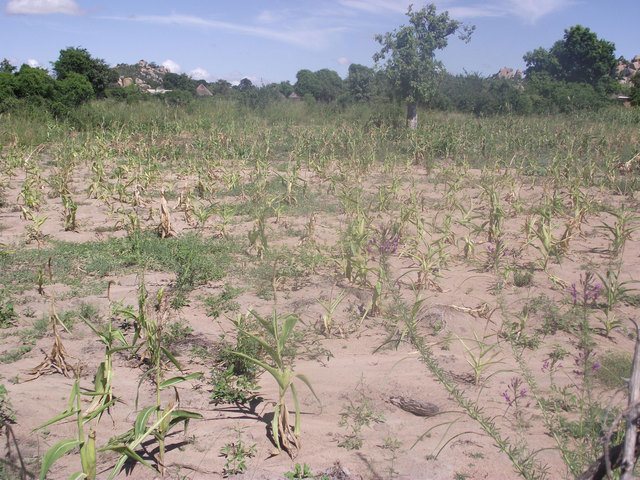
BY TAFADZWA MHLANGA
International Medical Corps (IMC) says a combination of grain shortages and excessively high food prices will constrain the accessibility of food for about 5,5 million people in Zimbabwe between January and March 2020.
IMC is a non-profit, humanitarian aid organisation that provides emergency medical services, as well as healthcare training and development programmes to those affected by disaster, disease or conflict.
In a report released last week, IMC described the situation as dire.
“During the January to March 2020 period, the number of food-insecure people is projected to increase to about 5.5 million, the highest number on record,” reads part of the report.
“This level of food insecurity is a result of ‘a combination of reduced availability of grains and excessively high food prices, both of which constrain access to food. Lower harvests have not only reduced food availability for rural households, but have also cut incomes from agricultural-related activities, further compounding the negative effects of inflated food price’.”
According to the Zimbabwe Vulnerability Assessment Committee’s recently concluded Rural Livelihood Assessment, during the peak hunger period (January to March), approximately 59% of rural households will be cereal-insecure.
This percentage translates to approximately 5 529 000 individuals requiring 818 323 tonnes of cereal (maize grain), costing more than US$217,6 million at its peak.
- Chamisa under fire over US$120K donation
- Mavhunga puts DeMbare into Chibuku quarterfinals
- Pension funds bet on Cabora Bassa oilfields
- Councils defy govt fire tender directive
Keep Reading
However, the drought from the 2018/19 season, the current unfavourable weather conditions and macroeconomic challenges are making it difficult to cater for the growing number of hungry individuals.
The macroeconomic challenges are due to inflationary pressures from a devaluing Zimbabwe dollar that has eroded the purchasing power of consumers.
The Board of the African Development Fund (ADF) last Wednesday approved a US$685 000 grant to strengthen Zimbabwe’s capacity to manage disaster risks, including droughts, floods and tropical cyclones, through the Bank’s Africa Disaster Risk Financing (ADRiFi) programme.
ADF is the concessionary lending arm of the African Development Bank (AfDB) Group.
“The grant will cover training for various national agencies involved in disaster risk management and financing and contingency planning as part of the ADRiFi project, designed to enhance the response of Regional Member Countries to climate disasters and promote innovative disaster risk finance instruments, such as disaster risk insurance,” AfDB said.
Further, in collaboration with the Bank, the African Risk Capacity, a specialised agency of the African Union, will provide in-kind contribution for trainings estimated at around US$320 000. The project will run for two years, starting from March 2020.
AfDB country manager for Zimbabwe, Damoni Kitabire, said extreme weather events such as prolonged dry spells, droughts, floods and tropical cyclones had affected agricultural production and disrupted livelihoods of rural Zimbabwe.
“Coupled with harsh economic challenges, these extreme weather events increase household vulnerability, food insecurity, chronic poverty and malnutrition across the country,” Kitabire said.
Currently, there is poor rainfall predicted for the 2019/20 farming season which is expected to worsen the situation further making farming unreliable this year.
“Poor rainfall in the first half of the rainy season will be compounded by the forecasted below-normal rainfall in the second half (January to March).
Agriculture cropping activity has thus remained below average,” IMC said.
According to FewsNet, the food security arm of USAid, erratic and poorly distributed mid-November rainfall marked the start of the 2019/20 season.
“The poor rainfall was followed by three weeks of very high temperatures and dryness through the first week of December. This affected agricultural activities and other livelihoods across the country. Despite rainfall resuming during the second week of December, the area planted for the 2019/20 season is expected to be significantly below average,” FewsNet said.
“The poor rainfall performance during the first half of the season will be compounded by the forecasted below normal rainfall during the second half (January to March 2020) of the rainy season.”
This has seen most markets, even in typical surplus production areas, without maize grain, increasing demand for maize meal and contributing to the high maize meal prices.
During an interview with American media company, Bloomberg, last week, Finance minister Mthuli Ncube revealed that they had several signed contracts to start importing food from South Africa and Tanzania, among others.
He revealed that the importation of this food would start as soon as the end of this month.











